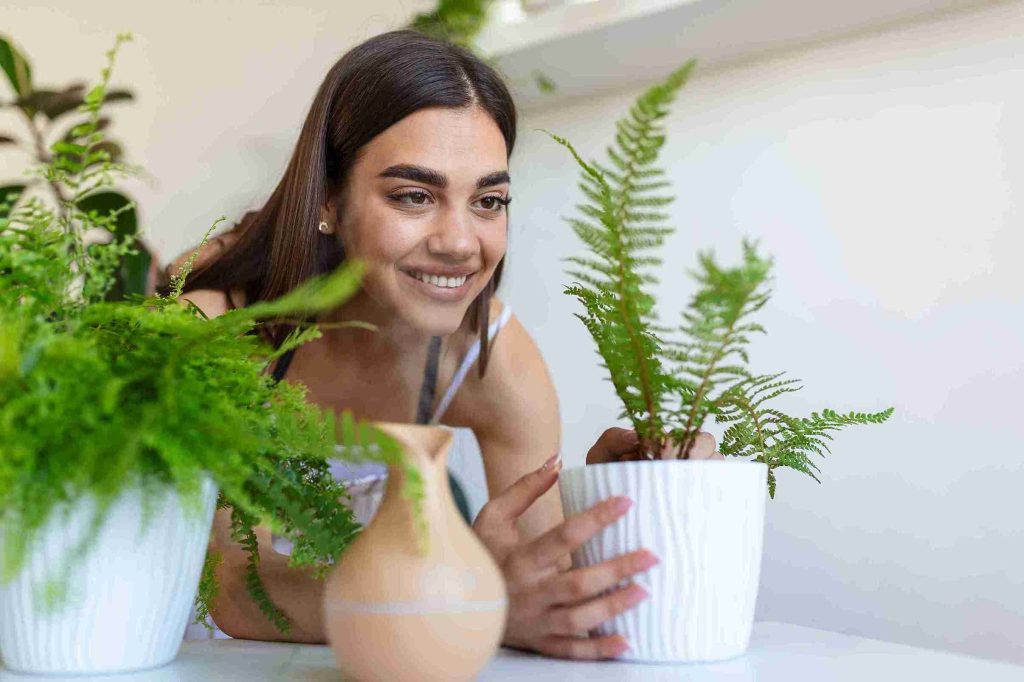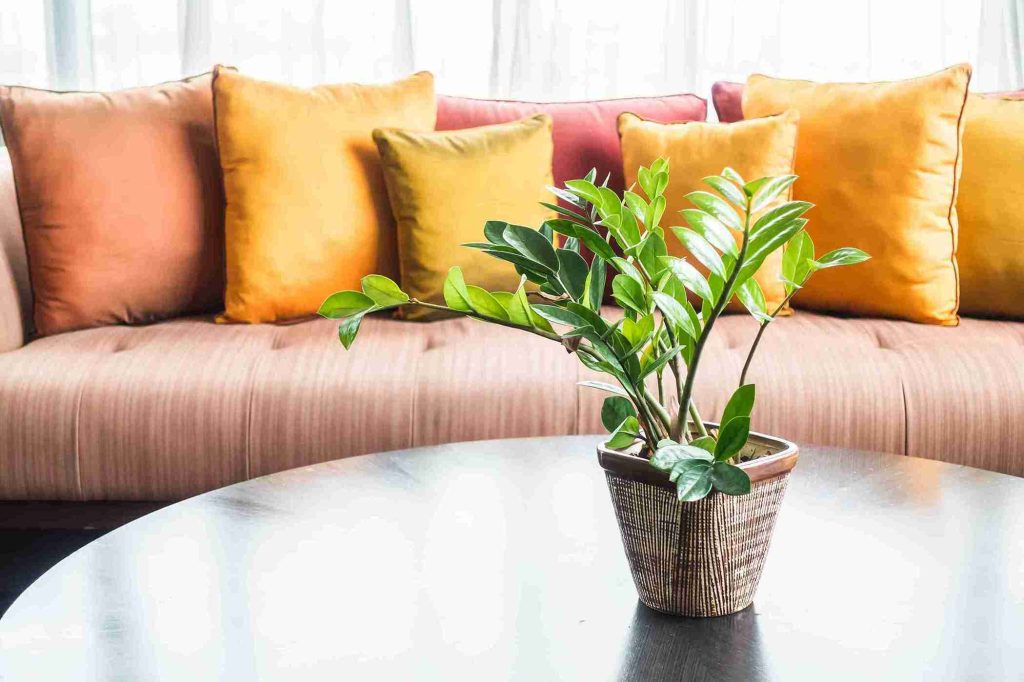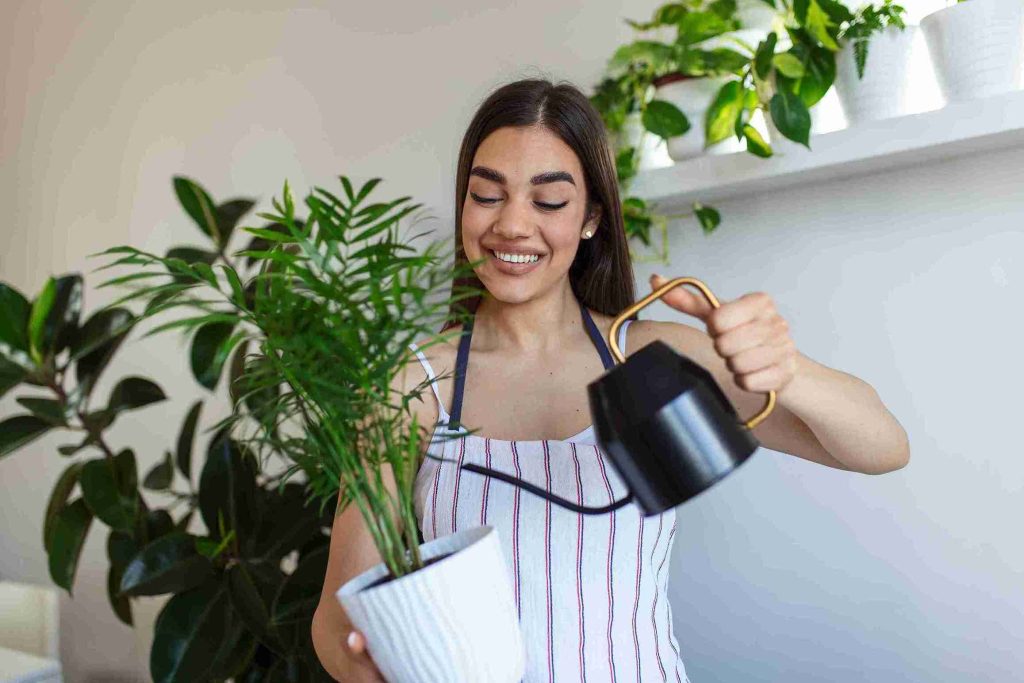I have always loved having plants inside my home, but when I found out I had allergies, I got worried. Some plants made my sneezing and itchy eyes worse. Then, I started looking for the best indoor plants for people with allergies.
Finding the right plants was not easy at first. Many plants release pollen or have strong smells that can cause allergy problems. But after trying different plants, I found some that made my home fresh and beautiful without making my allergies worse.
Now, I enjoy the benefits of clean air and green beauty without sneezing or coughing. If you also have allergies but want to bring nature indoors, this article will help. I will share the best indoor plants for people with allergies that are safe, easy to care for, and perfect for your home. Let’s make your space healthy and green!

Why I Needed Indoor Plants for Allergy Relief
I love plants, but allergies held me back. Every time I brought flowers inside, I sneezed a lot. My eyes got itchy, and my nose ran nonstop. I wanted to enjoy plants without feeling sick. So, I started looking for allergy-friendly indoor plants. These plants do not release much pollen or irritate allergies.
I read many articles and tried a few myself. Some worked well; others did not. Slowly, I learned which plants kept my allergies calm. These plants also made my home look fresh and green. I felt happier having them around. Finding the right plants changed how I care for my home. It gave me a fresh start. If you have allergies, you are not alone. You can still have indoor plants that don’t bother you. Let me share my journey and my favorite plants.
What Makes a Plant Allergy-Friendly?
Not all plants cause allergies. Some release a lot of pollen into the air. That pollen can make allergies worse. Other plants have leaves or sap that irritate skin or eyes. Allergy-friendly plants are different. They produce little or no pollen. They also don’t have strong smells that bother people.
I learned to choose plants with smooth leaves. Those plants don’t spread dust or mold easily. I also look for plants that clean the air. They reduce dust and other allergy triggers. Choosing allergy-friendly plants helped me breathe easier. It also made my home a safer place. I pay attention to how plants affect my allergies. You can do the same by watching how you feel. This way, you keep your home healthy and green.
Spider Plant: My Allergy-Friendly Friend
The spider plant was my first allergy-friendly plant. I heard it cleans the air well, so I decided to give it a try. I bought one for my living room, and it has become a great addition to my space.
Beautiful, Low-Maintenance, and Effective
It has long, green leaves with white stripes that look pretty and are easy to care for. I noticed my allergies didn’t get worse with this plant, which was a relief. The spider plant helps remove dust and chemicals from the air, making it a great choice for anyone with allergies. It grows fast and can even thrive in low light. I water it once a week and trim dead leaves. It’s been easy to maintain, and my spider plant has even grown baby plants that I can share with others.
Allergy-Friendly and Safe
One of the best things about the spider plant is that it does not produce pollen, so it’s safe for people with allergies. This plant gave me hope and showed me that indoor plants can be allergy-friendly.
Why You Should Consider the Spider Plant
If you want a simple, low-maintenance plant that cleans the air and won’t trigger allergies, the spider plant is a perfect choice.
Snake Plant: A Tough, Allergy-Safe Choice
I wanted a plant that could survive almost anything, and the snake plant caught my eye. It has tall, stiff leaves with green stripes and is known for being very hardy. I was looking for something low-maintenance, and the snake plant fit perfectly.
Hardy and Low-Maintenance
It needs little water, making it easy to care for. I placed mine near a window with indirect light, and it thrives there. The snake plant also cleans the air by removing toxins, which was an added benefit I didn’t expect. What I really love about the snake plant is that it doesn’t cause pollen allergies. I found that it helps me breathe better at night, as it releases oxygen even in the dark. This makes it ideal for my bedroom.
Simple Care Routine
I water it once every two weeks, and sometimes I forget, but it still does fine. The snake plant is perfect if you want a tough, allergy-safe plant that requires minimal attention.
A Great Plant for Beginners
It looks nice and helps improve air quality. I highly recommend the snake plant for beginners and allergy sufferers looking for a simple yet effective plant.
Peace Lily: Beauty Without Allergy Problems
I was surprised when I found that lilies can be allergy-friendly. The peace lily, with its big, shiny green leaves and white flowers, caught my attention. It doesn’t spread much pollen into the air, making it a safe choice for those with allergies.
Beautiful and Air-Cleaning
Peace lilies are also great at cleaning indoor air by removing mold spores. I placed one in my bathroom, and it thrived in the humidity. It needs only moderate light and weekly watering to stay healthy. One thing to note is that the plant’s sap can irritate skin if touched. To be safe, I keep it out of reach from pets and kids.
Peace Lily’s Positive Impact on My Space
Overall, the peace lily made my room look peaceful and fresh. It helped reduce dust and allergens, leaving my space feeling cleaner. I love having this beautiful plant around without the worry of sneezing.
A Safe, Allergy-Friendly Flowering Plant
If you’re looking for a flowering plant that’s safe from allergies, I highly recommend the Peace Lily.

Aloe Vera: Healing Plant That’s Allergy Friendly
I love aloe vera because it heals skin and requires little care. This plant has thick, spiky leaves filled with gel inside. What makes it perfect for me is that it does not cause pollen allergies, making it a safe choice for my home.
Easy Care and Bright Light Needs
Aloe vera prefers bright, indirect light. I water mine every two weeks, and it grows strong with minimal attention. The gel inside aloe vera helps soothe burns and cuts, which has been great for my family. On top of that, aloe vera cleans the air by removing toxins. It doesn’t create dust or pollen that could trigger allergies.
Aloe Vera in My Kitchen
I keep my aloe in the kitchen window, and it thrives there. It’s a nice plant to have if you’re looking for something both useful and allergy-friendly.
A Confidence Booster for Indoor Gardening
Aloe vera made me feel more confident about indoor gardening. It looks good, helps keep my home safe from allergies, and provides practical benefits.
Bamboo Palm: Air Cleaner That Loves Shade
I was looking for a bigger plant that cleans the air, and the bamboo palm fit perfectly. It has long, thin leaves that wave in the air and don’t produce pollen, making it a great choice for allergy sufferers.
Low-Light and Easy Care
This palm loves shade and indirect light, which makes it easy to keep indoors. I water it twice a week and sometimes mist the leaves to keep it fresh. The bamboo palm helped reduce dust and mold in my home. After a few weeks, I noticed my allergies improved. It’s not just functional; it also adds a tropical feel to the room.
Growing Tall and Beautiful
It grows taller over time, making it look even more beautiful in a corner of the room.
A Great Allergy-Safe Option
If you’re looking for a larger, allergy-safe plant that’s easy to care for, I highly recommend the bamboo palm.
Boston Fern: A Lush, Allergy-Safe Plant
The Boston fern is one of my favorite plants for allergies. It has soft, feathery leaves that look green and lush, making it a beautiful addition to my home. I keep mine in a bathroom with indirect light and high humidity, where it thrives.
Air-cleaning and Allergy-Friendly
Boston ferns help clean the air by trapping dust and allergens. It’s a great plant for allergy sufferers because it doesn’t produce pollen. I water it often to keep the soil moist but not soggy. The Boston fern is easy to maintain and adds a touch of nature to my space.
Benefits for My Bathroom
I love how the fern makes my bathroom feel fresh and alive. It also helps increase humidity in dry rooms, which is great during the winter months.
A Green, Soft, Allergy-Safe Addition
If you’re looking for something green, soft, and allergy-friendly, the Boston fern is a great option. It adds life to any room without making allergies worse.
Rubber Plant: Sturdy and Allergy-Safe
I tried the rubber plant because I wanted something tough and pretty. It has large, thick leaves that shine in the light, making it a beautiful addition to my space. The best part is that rubber plants do not spread pollen that triggers allergies.
Easy Care and Ideal Placement
I placed mine in a bright corner but kept it out of direct sunlight. It needs watering every one to two weeks, depending on the humidity, which makes it a low-maintenance plant. This plant helped improve air quality and reduced dust in my home. It looks elegant and modern, adding a fresh and clean feel to my space.
Safety Considerations for Pet Owners
I noticed that the rubber plant can be toxic to pets, so I made sure to keep it out of their reach.
A Low-Maintenance, Allergy-Friendly Choice
If you want a low-maintenance plant that fights allergens, the rubber plant is a great choice. It’s sturdy, easy to care for, and keeps my home fresh.
How I Keep My Allergy-Friendly Plants Healthy
Caring for allergy-friendly plants needs some attention. I water them regularly but avoid overwatering. Overwatering can cause mold, which triggers allergies too. I keep leaves clean by wiping them with a damp cloth. This removes dust and helps the plants breathe better. I also check for pests like spider mites or bugs.
These can irritate allergies if not controlled. I use natural sprays to keep pests away. I place plants where they get enough light but not too much sun. Some plants need indirect light to grow well. I also change their soil once a year. This keeps the roots fresh and healthy.
I learned that healthy plants don’t make allergies worse. They even help clean the air. These simple steps made my plants thrive and kept allergies down.
Tips to Avoid Allergies Around Indoor Plants
Even with allergy-friendly plants, you can face allergy problems sometimes. Dust can build up on leaves. Mold can grow in wet soil. To avoid this, I clean leaves weekly with a soft cloth. I also let the soil dry a little before watering again. I avoid plants that have strong scents or pollen if I sneeze easily. I keep plants out of my bedroom if I’m very sensitive.
Ventilation is important too. I open the windows to let fresh air in. Using an air purifier helps reduce allergens around plants. If you have pets, be careful which plants you choose. Some plants can harm them. Taking these precautions helped me enjoy plants safely. You can too by following these easy tips.
Why Allergy-Friendly Plants Are Worth It
Allergy-friendly plants changed my life for the better. I no longer avoid plants because of sneezing. My home feels fresh, green, and healthy. These plants cleaned the air and lifted my mood. Taking care of them became a relaxing hobby.
I gained confidence in gardening without fear of allergies. I even started sharing plants with friends who have allergies. They were happy to learn about safe options too. Indoor plants bring joy and beauty, even if you have allergies. It just takes the right choices and care.
I hope my experience helps you find plants you love. Start with one allergy-friendly plant and watch it grow. You’ll enjoy cleaner air and a happier home. Trust me, it’s worth every effort.

Hypoallergenic Houseplants for Allergies
I used to avoid houseplants because of my allergies. Then I discovered some are actually hypoallergenic. I started with a peace lily, and it worked well. It didn’t trigger my sneezing or itchy eyes. The leaves stayed clean and didn’t collect dust easily. I also added a snake plant to my living room. It didn’t release pollen, so I felt safe around it.
My symptoms stayed calm even during the allergy season. I noticed better air quality after just a few weeks. The spider plant became another favorite of mine. It’s easy to care for and very gentle on allergies. I learned to avoid flowering plants with heavy scents or pollen. These hypoallergenic options made indoor gardening possible for me. I now enjoy plants without suffering from allergic reactions.
They bring life to my space and help me breathe better. I also clean the leaves weekly to keep them dust-free. That helps prevent any irritation or sneezing. Choosing the right houseplants really changed my life. It’s a simple step that made a huge difference in my home. Now, I recommend hypoallergenic plants to my allergic friends too. They’re proof that nature and health can go hand in hand indoors.
Low Pollen Indoor Plants for Allergies
Pollen used to make my allergies unbearable indoors. I finally decided to research low-pollen houseplants. That’s when I found out about snake plants. I bought one and noticed less sneezing almost instantly. It doesn’t produce airborne pollen, which helps a lot. Then I tried adding a pothos to my collection. It was beautiful and didn’t affect my breathing.
I avoided plants that flower or shed often. I chose rubber plants, too, since they’re low-pollen and easy. These plants helped reduce irritation from pollen in my home. I keep them in every room now, even in my kitchen. I make sure to dust their leaves regularly. This keeps allergens from building up on the surface. Low pollen plants really helped me feel more comfortable inside. I also learned to avoid anything labeled as high-fragrance.
They tend to trigger reactions just like pollen. Choosing the right plants changed my indoor environment completely. Now, I enjoy greenery without constant sniffles or watery eyes. I even sleep better and wake up less congested. These plants gave me peace of mind and cleaner air. For allergy sufferers like me, low pollen plants are life-changing.
Air Purifying Plants for Allergies
I always struggled with dust and airborne allergies at home. Then I read about air-purifying plants that filter toxins. I brought home a peace lily and noticed a difference quickly. The air felt fresher, and I sneezed less often. I also added a bamboo palm to my bedroom. It looked great and helped me breathe easier at night.
Spider plants became a must-have after I tried one. They clean the air and are safe for allergies. I avoid strong-scented plants that irritate my nose. Instead, I go for low-maintenance ones with broad leaves. I wipe them clean weekly to stop dust buildup. I also added a rubber plant in my living room. It’s great at filtering formaldehyde and doesn’t cause reactions. These plants made my space look better and feel healthier.
I feel more relaxed now that my symptoms are reduced. I even noticed fewer headaches after adding more greenery. Clean air helped me sleep deeper and wake refreshed. Now I recommend these plants to my allergy-prone friends. They are natural air purifiers that really work. Adding them is one of the best choices I made. They transformed my home into a healthier, allergy-friendly space.
Allergy Friendly Plants for Bedrooms
I needed allergy-friendly plants that wouldn’t ruin my sleep. I started with a snake plant near my window. It helped clean the air while I slept. I didn’t wake up stuffy anymore. Then I added an areca palm to a corner. It made the room feel fresh and didn’t release pollen.
I also used a spider plant on my nightstand. It absorbed toxins without causing irritation. I avoided plants with flowers or strong scents. Those always made my allergies worse. Rubber plants also worked well in my bedroom. They stayed clean and didn’t trigger any symptoms. I made sure each plant had low pollen production. I dusted their leaves weekly to prevent allergen buildup. These allergy-friendly plants helped me rest easier every night.
My breathing improved, and I didn’t need allergy meds often. I slept deeper and woke up feeling more refreshed. The plants brought peace and beauty to my room. Choosing the right ones took time, but it paid off. I now enjoy both clean air and calming greenery. For anyone with bedroom allergies, I recommend these gentle plants. They made a huge difference in my life and sleep quality.
Best Indoor Plants for Dust Allergies
Dust allergies made me fear bringing plants inside. However, I learned that some plants help fight dust. I started with a rubber plant, and it changed everything. Its broad leaves collected dust without triggering my allergies. I wiped the leaves weekly to keep them clean. Then I tried a peace lily, and it worked great. It filtered the air and didn’t release much pollen. My symptoms improved after just a few days.
I also placed a snake plant near the door. It caught dust before it spread around the house. Spider plants were another great choice for my allergies. They’re small, pretty, and effective at trapping pollutants. I avoided fuzzy or flowering plants that collect too much dust. I made sure every plant I picked had smooth leaves. That made it easier to keep them allergen-free. My breathing improved, and I felt better indoors.
I didn’t wake up congested or sneezy anymore. These plants helped control dust naturally and beautifully. Now, I enjoy houseplants without constant allergy flare-ups. They keep the air cleaner and help me feel healthier. I always recommend them to others with similar problems. They’re simple, natural, and allergy-safe for any indoor space.

Conclusion
Growing indoor plants helped me feel happier and healthier. I don’t miss out on greenery despite allergies. Choosing the right plants is key. Spider plants, snake plants, and peace lilies are great starters. I also like bamboo palm and aloe vera.
Keeping plants clean and healthy matters a lot. I learned to listen to my body and plant signals. This made my home a safe, green space. If you have allergies, don’t give up on plants. You can find many allergy-friendly options. Just take your time and care for them well. I hope my experience helps you enjoy plants without allergy problems.
FAQ
Indoor plants that don’t cause allergies
Choose plants like snake plant, spider plant, and bamboo palm. These don’t release pollen and help clean the air.
Best houseplants for clean air and allergies
Peace lily, pothos, and areca palm clean air without causing sneezes. They remove dust and toxins safely.
Allergy-friendly plants for bedrooms
Use aloe vera, spider plant, or snake plant in bedrooms. They don’t have pollen and help you sleep better.
Safe plants for people with asthma and allergies
Choose plants like bamboo palm, dracaena, and ZZ plant. These help clean the air and don’t trigger asthma.
Low-maintenance hypoallergenic houseplants
Snake plants, ZZ plants, and pothos need little care and no pollen. They grow well indoors with low light and water.
Best indoor plants for dust allergies
Spider plants and rubber plants catch dust and clean the air. They trap dust on leaves and reduce allergy signs.
Indoor plants that trap allergens
Spider plants and peace lilies pull allergens from the air. They hold dust on their leaves, making the air cleaner.
Allergy-free houseplants for homes
Choose non-flowering plants like snake plants or rubber plants. They don’t release pollen and keep the air fresh.
Flowering houseplants safe for allergies
Peace lily and bromeliads bloom but don’t cause sneezing. They are safe and look pretty indoors.
Best palms for allergy sufferers
Areca palm and bamboo palms clean air without pollen. They help reduce allergy triggers in your home.
ZZ plant allergy-safe
ZZ plant has no pollen and cleans indoor air. It’s safe and very easy to care for.
Peace lily hypoallergenic benefits
Peace lily removes mold spores and air toxins. It blooms but rarely triggers allergies.
Philodendron for allergy sufferers
Philodendron doesn’t release pollen and is safe for most people. It also helps clean indoor air.
Chinese evergreen allergy-friendly plant
Chinese evergreen is low-pollen and safe for allergy sufferers. It also removes air toxins like smoke and dust.


